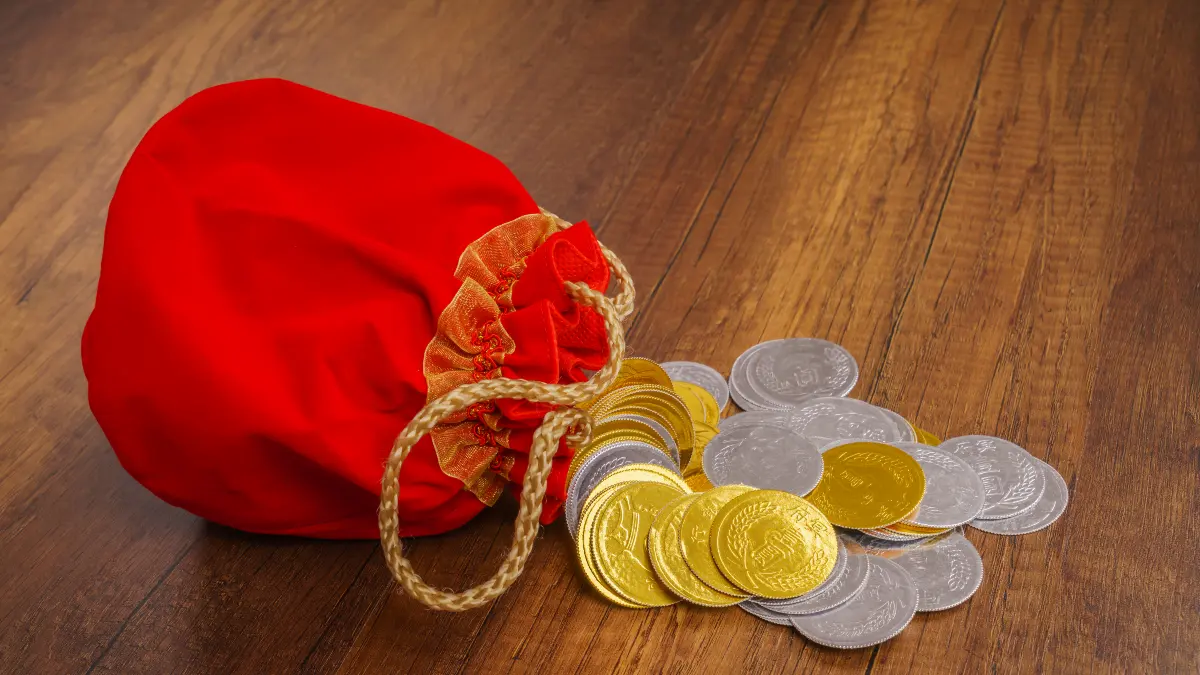Your savings are quietly evaporating. The official inflation numbers are not just misleading; they are actively concealing the rapid erosion of your purchasing power. That traditional 60/40 mix of stocks and bonds was never designed for this high-inflation environment, leaving your wealth dangerously exposed.
It is time for a new game plan built not on fading paper promises but on lasting, real-world value. This strategy outlines a resilient portfolio built on three core pillars: owning real stuff, investing in dominant price-setting businesses, and securing truly rare assets.
This framework moves your money away from things that fade and toward assets designed to last. This is how you build a portfolio for the world we live in now.
Moving Your Money From Things That Fade to Things That Last
The Three Pillars of a Resilient Portfolio
Real Stuff (Tangible Assets)
Assets with intrinsic, physical value that can’t be digitally created. They offer a time-tested hedge against currency devaluation and thrive in an era of scarcity.
Examples: Real Estate, Commodities (e.g., Oil, Copper), Infrastructure, Farmland.
Price-Setting Businesses
Essential companies so dominant they can pass inflation costs directly to customers. This “pricing power” protects their profit margins when their own costs rise.
Examples: Utilities, Consumer Staples (e.g., food brands), Key Software, Toll Roads.
Truly Rare Things (Scarcity)
Assets with a verifiably finite supply that cannot be inflated away by governments or central banks. Their value is derived from their absolute, unchangeable scarcity.
Examples: Gold, Bitcoin, Collectible Fine Art, Rare Whiskey.
The problem is clear: your money is losing its buying power much faster than the government is telling you. A standard investment plan, like the old 60/40 mix of stocks and bonds, was not built for this kind of environment. It leaves you dangerously exposed.
You need a new game plan. The strategy outlined here is not about chasing fads or taking wild risks. It’s a portfolio built for resilience, designed to protect your wealth and help it grow in a world of high and underreported inflation.
The philosophy behind this nine-asset plan is simple. It’s built on owning three types of things:
- Real Stuff: Tangible things you can touch that have real, lasting value.
- Price-Setting Businesses: Companies so essential to people’s lives that they can raise their prices to keep up with inflation without losing customers.
- Truly Rare Things: Assets that have a strictly limited supply and cannot be created out of thin air by a government or central bank.
Let’s break down each of the nine assets in your new game plan.
Owning Real Stuff in a Digital World
In a world where new money can be created with a few keystrokes at a central bank, owning physical, tangible assets is one of the most powerful and time-tested ways to protect your wealth. These assets represent a strategic move away from paper promises and toward things with undeniable, real-world value. This isn’t just a short-term hedge; it’s an investment in the primary theme of the next economic era: a world of increasing scarcity where physical “stuff” matters more than ever. The age of cheap global production is ending, and a new age of resource competition is beginning. Owning these assets positions you on the right side of that historic shift.
9 Ways to Fight Back Against Inflation
Gold – The 5,000-Year-Old Money Protector

For thousands of years, across every civilization, gold has been a store of value. It is the ultimate form of money. It has no counterparty risk—meaning you don’t have to trust a bank or government to make it good—and it cannot be devalued by a printing press.
Its main job in your portfolio is to act as insurance against the decline of paper currencies and the global instability that often comes with economic trouble. Right now, central banks all over the world are buying physical gold at a record pace. They are doing this to diversify their own savings away from the U.S. dollar, a sign that even the world’s largest financial institutions are seeking the safety of a real asset.
You can buy physical gold in the form of coins or bars. For an easier and more liquid option, you can invest in a Gold ETF (Exchange Traded Fund), which is a stock that tracks the price of gold. Another option is to buy shares in high-quality gold mining companies, which can give you leveraged returns as the price of gold rises.
Commodities – A Bet on the Building Blocks of Everything

While gold is a monetary asset, a broader basket of commodities is a direct hedge against the rising cost of physical goods. Commodities are the raw materials that build and power our world: things like oil, natural gas, copper, aluminum, and wheat.
When you hear about inflation, it’s often the rising price of these basic inputs that is driving it. By owning a basket of commodities, you are directly owning the “stuff” that is causing the inflation. Historically, this relationship is very strong. Since 1960, commodities have returned about 15% in years when inflation is high, compared to losing 5% when inflation is low. In a world of trade disputes and supply chain problems, these raw materials are becoming more valuable and strategically important.
The easiest way for most people to get exposure is through a broad commodity index ETF. These funds hold a diversified basket of the most important raw materials, giving you a simple way to invest in the trend.
Real Estate – More Than a Home, It’s an Inflation Shield

Real estate is a classic inflation hedge that protects your wealth in two powerful ways. First, as inflation drives up the cost of lumber, concrete, and labor, the cost to build a new house goes up. This “replacement cost” pulls up the value of all existing properties along with it. Second, and more importantly for an investor, if you own a rental property, you can increase the rent each year to keep up with the rising cost of living.
This protects the real value of your income stream. The historical link is undeniable, with property values showing a very high correlation to the CPI over the last four decades. The best opportunities are in properties with steady demand, like multifamily apartment buildings and industrial warehouses needed for e-commerce.
You can buy rental properties directly if you have the capital and want to be a landlord. For an easier, more diversified path, you can invest in publicly traded Real Estate Investment Trusts (REITs). A REIT is a company that owns and operates a portfolio of income-producing properties, and you can buy shares of it just like any other stock.
Farmland – The One Thing They’re Not Making More Of

Farmland may be the ultimate “real stuff” asset. It is essential, scarce, and tangible. The investment case is simple and powerful: the global population continues to grow, which means the demand for food is always increasing. At the same time, the amount of productive farmland on Earth is finite and, in some places, shrinking.
This fundamental supply and demand imbalance provides a powerful, long-term tailwind for farmland values. It’s an asset that is not closely tied to the ups and downs of the stock market, and it provides a steady income stream from the rent paid by farmers. In 2025, the average value of U.S. farm real estate hit a new record high, continuing a multi-year trend driven by strong demand from both farmers and investors.
Historically, owning farmland was only possible for the very wealthy. Today, it has become more accessible. There are a small number of specialized REITs that own portfolios of farms across the country, allowing you to buy a share and participate in the returns without needing to buy a whole farm yourself.
The Government Bond That Pays You More When Inflation Rises

TIPS stands for Treasury Inflation-Protected Securities. These are special U.S. government bonds that are directly and contractually linked to the official CPI number. When the CPI goes up, the principal value of your bond goes up with it, and the interest payments you receive are calculated on that new, higher value. They are a perfect hedge against the reported inflation number.
While we know that number is flawed, TIPS are very interesting right now for a specific reason: they are offering a significant positive “real yield.” This means you are guaranteed to earn a return above the official inflation rate if you hold the bond to maturity. For example, a five-year TIPS currently pays about 1.2% more than the rate of inflation. This is a rare opportunity to lock in a guaranteed win against the government’s own metric.
You can buy TIPS directly from the government through the TreasuryDirect website. For most people, an easier option is to buy a TIPS ETF through a standard brokerage account.
“Pricing Power” Stocks – Owning the Companies That Can Raise Prices

In a high-inflation economy, not all companies are created equal. Some get crushed by rising costs for materials and labor. But others thrive. The winners are the companies that have “pricing power.” This is the ability to raise the prices of their products to offset their own rising costs, without losing their customers.
These are typically dominant businesses that sell essential goods and services that are difficult to substitute. Think about the company that makes your favorite brand of toothpaste, the utility that provides your electricity, or the energy company that produces the gasoline for your car. These businesses can pass inflation on to you, and by owning their stock, you get to be on the right side of that transaction.
This involves carefully selecting the stocks of strong, blue-chip companies in sectors known for pricing power, such as Consumer Staples (food, beverages, household goods), Energy, and Materials. A simpler way to get broad exposure is by investing in sector-specific ETFs.
Infrastructure – The Toll Roads and Power Grids That Pay You Back

Infrastructure is a unique asset class that combines the tangible nature of real estate with the steady income of a bond. This includes the essential, long-life assets that form the backbone of our economy: toll roads, airports, oil and gas pipelines, cell towers, and the massive data centers that power the internet and AI.
The key feature of these businesses is that they often operate under long-term contracts or regulated agreements that have inflation-escalator clauses built right in. This means their revenue automatically increases with inflation, providing a stable, predictable, and inflation-linked income stream for investors.
The most accessible way to gain exposure to a diversified portfolio of these assets is through listed infrastructure funds or ETFs.
Bitcoin – Is It the New Digital Gold?

The investment case for Bitcoin is not about using it to buy coffee. It’s about its core characteristic: absolute, mathematical scarcity. The Bitcoin computer protocol guarantees that there will only ever be 21 million coins created. That’s it. This stands in stark contrast to government-issued fiat currencies, which can be, and are, created in unlimited quantities.
In a world where central banks can expand their balance sheets by trillions of dollars at will, Bitcoin offers a decentralized, non-sovereign, and digitally native way to store value. A growing number of investors and even some institutions now view it as “digital gold,” a hedge against the long-term debasement of paper money.
The most direct way is to purchase Bitcoin on a reputable cryptocurrency exchange. For those who prefer to use a traditional brokerage account, a number of recently approved spot Bitcoin ETFs now offer a convenient and regulated way to get exposure.
Art & Collectibles – The Ultimate Uncorrelated Asset

For centuries, fine art and other rare collectibles have served as a store of value for the wealthy. The price of a masterpiece painting or a rare vintage car is not typically driven by what the stock market or the bond market is doing. This makes it a powerful tool for diversification.
During periods of high inflation and currency devaluation, wealthy individuals often seek to protect their purchasing power by moving capital into tangible, beautiful objects that have held their value for generations. This increased demand from people seeking a safe haven can drive prices higher. In 2022, a year when both stocks and bonds lost money, the art market was setting new auction records. While the super-high-end has slowed, the market for works under $10 million has shown significant strength.
This market was once exclusive to the ultra-rich. Today, new platforms have made it more accessible. These platforms buy high-value artworks, securitize them, and allow you to buy shares in a specific painting. This allows you to participate in the potential appreciation of a masterpiece for a fraction of the cost of buying it outright.
The 9-Asset Inflation-Proof Portfolio: A Quick Guide
The table below provides a simple, at-a-glance summary of the nine-part strategy. Use it as a checklist to guide your thinking and your conversations with a financial advisor as you begin to build a more resilient portfolio.
| Asset Class | What It Protects You From | Risk Level | How You Can Invest |
| 1. Gold & Precious Metals | Devaluing Paper Money | Medium | Physical Coins, ETFs (GLD), Mining Stocks |
| 2. Broad Commodities | Rising Cost of Raw Materials | High | Index ETFs (DBC), Sector ETFs (XLE) |
| 3. Real Estate (Income) | Rising Rents & Building Costs | Medium | Rental Properties, REITs |
| 4. Agricultural Land | Food Demand & Land Scarcity | Low-Medium | Specialized REITs (LAND), Partnerships |
| 5. TIPS | The Official CPI Number | Low | TreasuryDirect, ETFs (TIP) |
| 6. “Pricing Power” Stocks | Rising Business Costs | Medium-High | Top Stocks (Staples, Energy), Sector ETFs |
| 7. Infrastructure | Inflation-Linked Contracts | Low-Medium | Listed Funds, ETFs (IFRA) |
| 8. Bitcoin | Unlimited Money Printing | Very High | Direct Purchase, Spot ETFs (IBIT) |
| 9. Fine Art & Collectibles | Stock Market Volatility | High (Illiquid) | Auctions, Fractional Platforms |
Conclusion
The central message of this report is both urgent and clear: the official inflation numbers are a mirage. They mask a much more severe and ongoing erosion of your hard-earned money. To rely on conventional investment strategies in this environment is to passively accept the destruction of your wealth. The threat is real, and it requires a proactive and thoughtful response.
The nine-asset portfolio detailed here is not a random collection of ideas. It is a coherent and integrated strategy designed for the world we live in now. It is a framework built on the timeless principles of tangible value (real estate, farmland, art), the economic reality of pricing power (inflation-resistant stocks, infrastructure), and the mathematical certainty of absolute scarcity (gold, commodities, Bitcoin).
Together, these assets offer a multi-pronged defense against the twin threats of currency debasement and the rising cost of living. This is not about timing the market or making risky bets. It is about building a truly resilient portfolio that can weather the economic realities of the coming decade and emerge stronger. The time to question the official narratives, to critically re-evaluate your own financial plan, and to take decisive action is now—before the painful gap between the government’s story and your reality becomes obvious to everyone.

